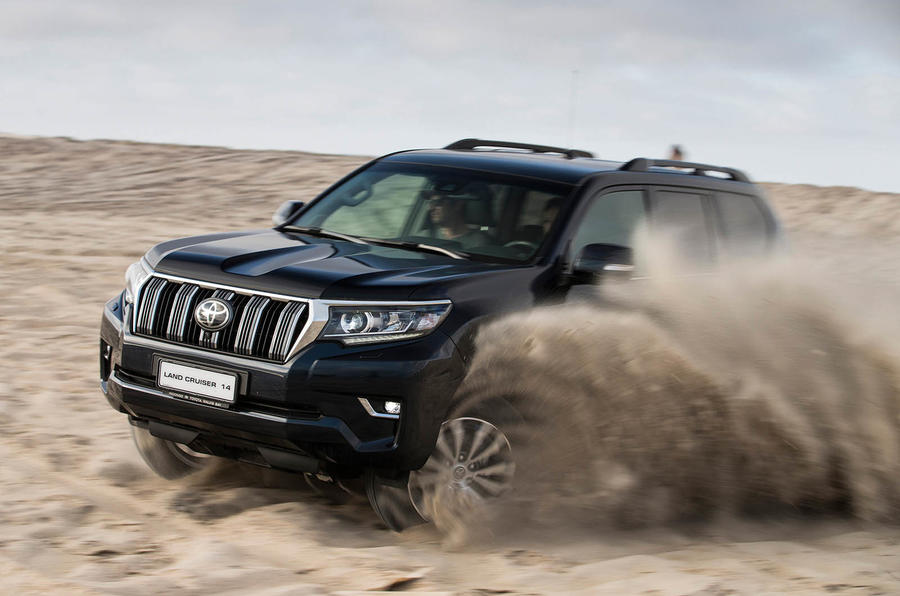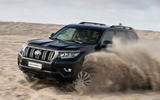What is it?
I think part of the appeal of a Toyota Land Cruiser is that you can take it anywhere. I don’t mean ‘anywhere’ as in ‘it can go anywhere’, although obviously it can. No, I mean ‘anywhere’ as in: to the shops, to a client meeting, to a shoot or building site or the theatre or a Pony Club rally, where at any of the above a Land Cruiser would say precisely the same thing about you: next to nothing.
Toyota’s biggest, baddest and most luxurious and expensive off-roader – for the UK, at least – is, then, the most curious of things, the classless car, capable of doing everything, but shouting ‘nowt while it does it, except that you bought it because you need it.

Anyway, now, this car, which was introduced in this form in 2009, and which has had a couple of minor changes since, has for 2018 been rather more heavily revised to try and keep pace with its rivals, nearly all of which have been entirely replaced, platform and all, since then: the Land Rover Discovery (the key rival even away from a JLR-centric UK market), the Nissan Patrol (absent from the UK), Jeep Grand Cherokee, plus other ‘luxury’ focused SUVs like the Volvo XC90, BMWs, Audis, Mercedes and, well, everyone who offers a big 4x4, which is pretty much everyone.
But notwithstanding all of the rivals, the basics of the Land Cruiser are what they still were. It has a body on frame construction, albeit 11% more torsionally rigid than it was, with a few minor tweaks the outside, to aid cooling, and higher wings to help you place the edges of the car.
There are 3dr and 5dr body styles, with five or seven seats, all of which can be had in the UK in trim levels stretching up to Invincible, which costs £52,295 as a 5dr, which is how they’re mostly bought in Britain. In an effort to get as much value as it can from the model, though – and perhaps spotting that the Land Rover Defender is no longer available (for now, at least) – Toyota is now introducing a more basic, workhorsey variant, too: the ‘Utility’ version can be had from £32,795 as a three-door manual. Whisper has it that the body-on-frame’s versatility, from a many-body-styles perspective, hasn’t gone entirely unnoticed at Toyota either.
Power comes from a 2.8-litre diesel engine (in Britain that’s all we get; other markets can have bigger petrols and so on), tweaked by a new, smaller, turbo, and urea exhaust solution combo, and it makes a steady 174bhp, driving all four wheels through either a six-speed manual or auto gearbox. The more important number is 331lb ft, which the big four-cylinder makes at just 1600rpm, but it remains a fact that acceleration is not this car’s theme: it weighs 2430kg and can tow a three-tonne trailer.















































Join the debate
Add your comment
Works for me
I had the 120 model and now a 150 model (the one before this).
I live on a boat and keep bees. I drive down the crappiest country lanes to my boat while needing to carry 300kg of coal and wood to my boat. The farm fields I drive in to go tend to the bees have no roads - I make them. Or the tractors do... Few cars can do what this can - and keep coming back for more.
Tried the X5 - it's nice, but I doubt it can handle what I throw at it. And a Land Rover? HA HA HA! Yeah, not touching it with my boat's barge pole. Only a fool would read the countless stories about their "reliability" and still buy one.
In short, I don't care about looking cool. I need a workhorse that I can cart coal, bee equipment, kids with - and equally drive to the office in comfort. The centre console fridge is great, a cold Coke is always to hand when you are stuck in traffic.
Nope, let the yummy mommies drive to the school run in an X5 or LR. I need a car that I can rely on and take the worst the English and Welsh farm lands and roads can throw at it - and keep coming back for more.
Anything smaller?
I have to agree with many of the comments above, in base spec, this is a superb car. However, why can't we have the same rugged dependability in a smaller package? This is too big for most UK roads, let alone car parks.
REALLY ??
Autocar quote " markets Australia, Mid East, Africa and S.Amderica where it dominates" Yes it does for a number of reasons but one especially- the air conditioning units works even in 50C plus and high humid or dry conditions. A things which is failed by almost all others.
Of course you also MISSED a point of sales. I dont have at my finger tips the market penetration numbers - but I reckon that Russia outsells ALL and each of those mentioned. Oh but of course Autocar like the rest of most the world has its nose in the air when the signpost points to Russia. How BLIND can you be as well as ignorant